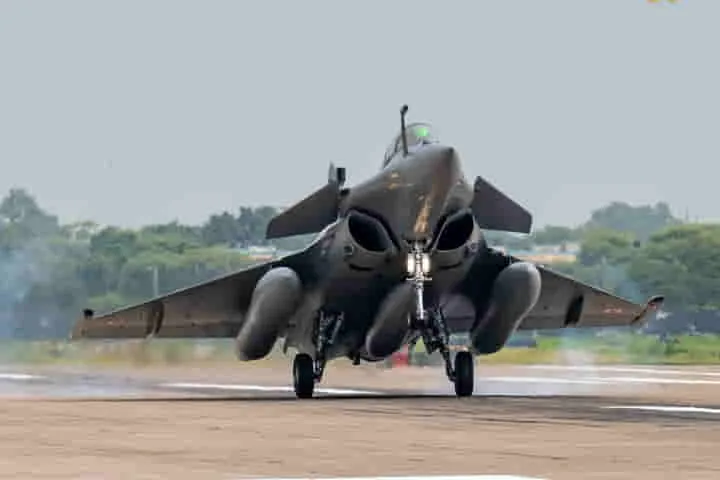By DK Pandey
The Indian Air Force (IAF) is geared up to face a major challenge. Focused for decades on the threat from arch-rival Pakistan, it’s now faced with the potential for a two-front air war. Amid ongoing tensions with China, uncertainty about the future in Afghanistan and rapidly changing geopolitical scenario in the Indo-Pacific region, the IAF is forced to increase its operational capabilities.
China has announced the sale of a variety of combat drones to Pakistan. Pakistan may also acquire Chinese strike aircraft. China's own air force with J-10 and J-11 fighters and the ‘so called’ stealth fighter J-20 also poses a threat to the IAF. China is rapidly building and expanding air bases and defences along its western borders.
Even today, the biggest fleets in the IAF inventory are those of the MiG-21, MiG-29, and the Su-30MKI. Twenty-six out of 36 Rafale multirole fighters have been delivered by French firm Dassault Aviation so far, and some have already been deployed to counter any Chinese threat. The induction of Rafales, 22 AH-64 Apache gunships, 15 CH-47 Chinook helicopters have significantly added lethality to IAF combat potential.
India also has a number of high-profile domestic projects in development. It plans to fly a prototype from its own fifth-generation stealth fighter program by 2025 and recently unveiled an unmanned fighter jet program.
The Chief of the Air Staff, Air Chief Marshal (ACM) V.R. Chaudhari has said that the four squadrons of Light Combat Aircraft (LCA)-Mk1A, six of the Advanced Medium Combat Aircraft (AMCA) and six squadrons Medium Role Fighter Aircraft (MRFA), and then factoring in the phaseouts of the MiG-21s, Jaguars, Mirage-2000 and MiG-29, the force will remain at 35 squadrons in the next decade.
The original order for lightweight fighter jet, the 40 HAL Tejas Mark 1 fighters was supplemented by an additional order of 83 improved Tejas Mark 1A variants, with a second production line being built to speed up the production. The IAF is also seeking 114 Medium Multirole Combat Aircraft (MMCA).
It is obvious that the IAF is becoming much more lethal and competent arm,
For years, India has relied on foreign suppliers for much of its military hardware. In view of the increasingly varying relationship with various stakeholders vis-v-viz financial strain, Prime Minister Narendra Modi has launched ‘Make in India’ and ‘Atmanirbhar Bharat’ programmes, aimed at boosting domestic manufacturing.
Induction of sophisticated aircraft needs relevant infrastructure and essential support resources also. The joint planning and execution of operations by the three services with Network centric integration is of paramount importance for successful conduct of operations. Thus, a robust Networking and Communication system, associated competent maintenance support, vital supply chain mechanism. The most vital is ‘Man behind Machine’, the air warriors must be mentally and physically competent. Necessary, financial and administrative support will further strengthen their high morale.
Being a state-of-the-art technology-driven organization, the IAF is in the midst of a multidimensional modernization and expansion effort. The government has to play the vital role as only adherence and timely accomplishments of various projects can enable the IAF to be more efficient and effective in the execution of combat roles.
(Prof. DK Pandey retired from the Indian Air Force as Group Captain. He teaches at the Galgotias University in Uttar Pradesh, India. Views expressed are personal)




















